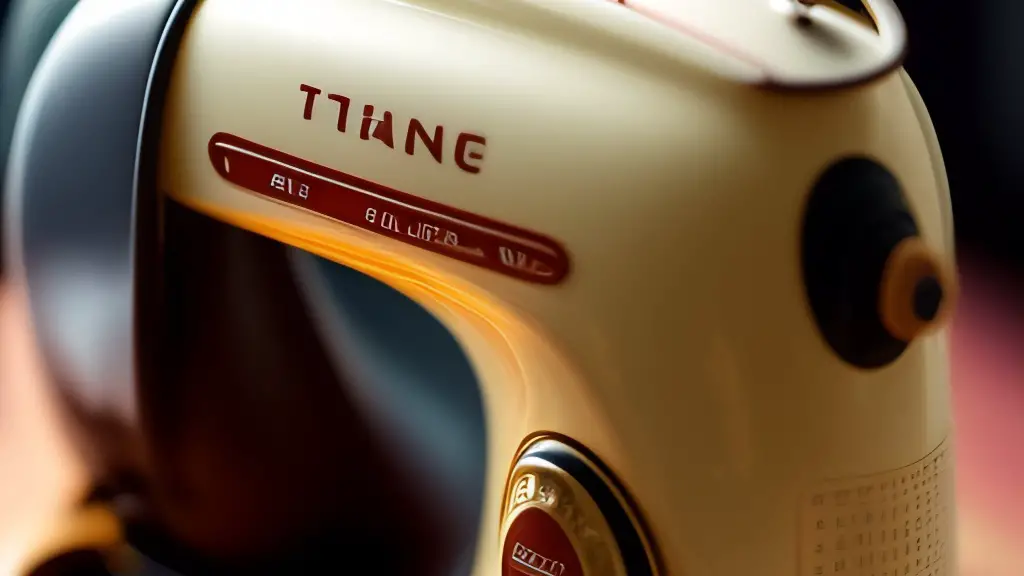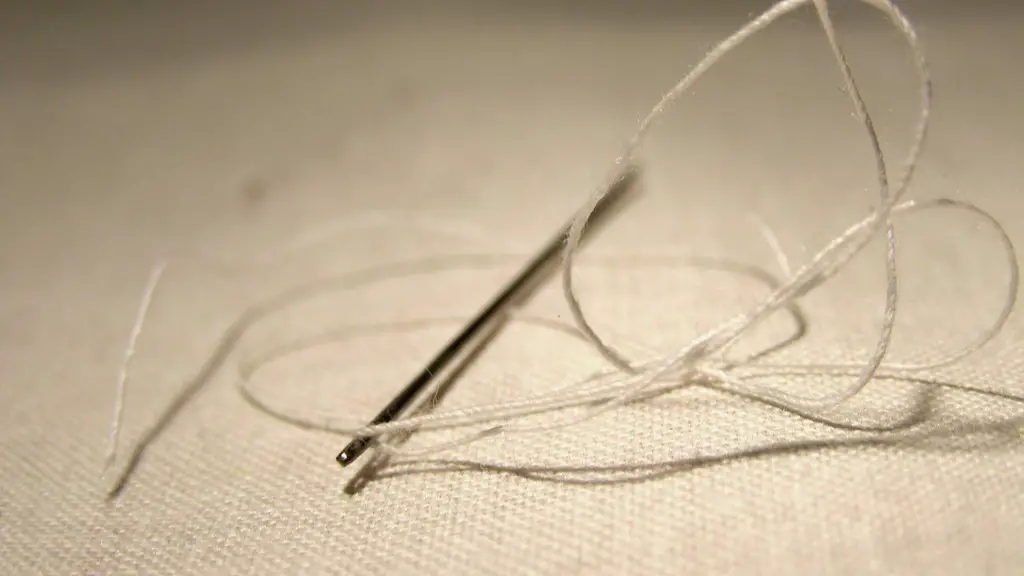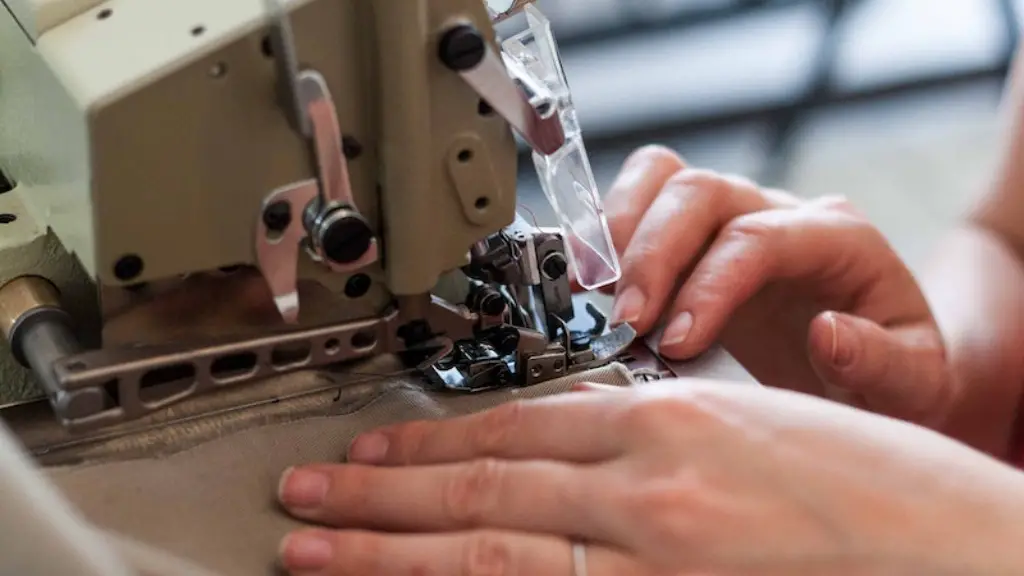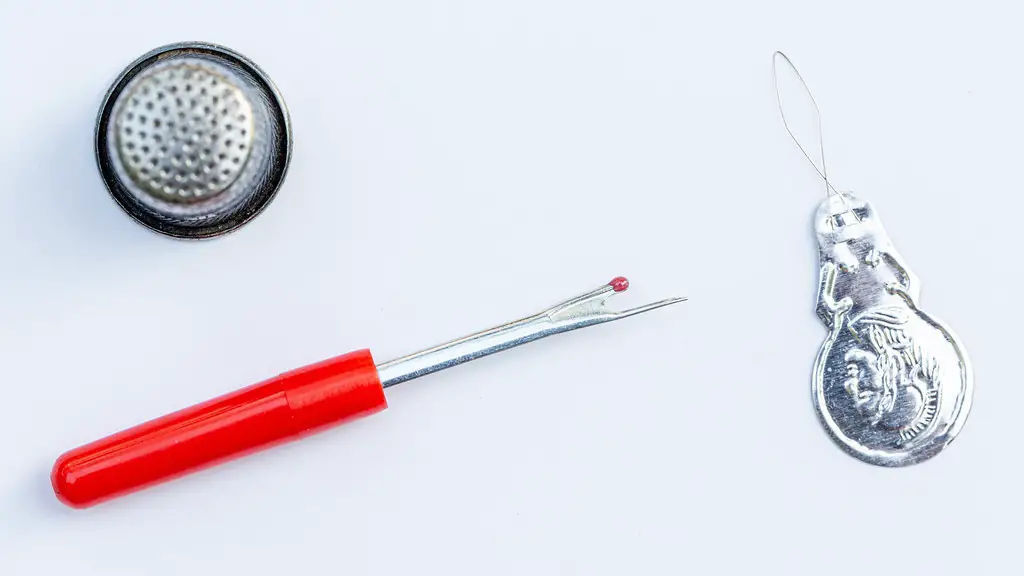For those who enjoy the creative process of sewing and embroidery, a broken Kenmore sewing machine can cause extreme frustration. Sewing machines are a reliable tool, yet even the best-kept machine can be affected by a few different types of wear and tear, and they occasionally require repairs. Even the most technologically-savvy user can feel overwhelmed by the task of repairing a complex piece of machinery. With a few simple steps, even a novice can repair a broken Kenmore sewing machine.
To perform the correct repair process, it is essential to accurately identify the issue with the machine. Common Kenmore sewing machine repairs include thread jamming and needle breakage, and these problems usually can often be resolved with basic repairs. Inspect the threading of the machine to ensure it is properly threaded and the needle is tightly secured; if the needle is bent or mangled, replace it with a new one. Additionally, tensions should be set correctly, and the presser foot should be oiled often.
To prepare to begin the repair process, it is beneficial to know the make and model of the Kenmore sewing machine. This information can typically be found on the machine itself, often referred to as the “serial number” and is a combination of numerical and alphabetic characters. A further step is to acquire the correct parts and supplies for the repair, often found by searching online for the machine’s particular model. Parts for common Kenmore sewing machine repairs include extra needles and threads, as well as brushes to engage the interior belts, engines, and gears.
The best place to find guidance for the repair process is the Kenmore sewing machine manual. This user guide contains information about the machine and specific instructions for the repair. Following these instructions can help the user to become more familiar with Kenmore sewing machine repairs. Additionally, online resources in the form of instructional videos, blog posts, and forums can be found, and oftentimes they include visual diagrams and explanations to make the repair process easier to understand.
Tools suitable for a Kenmore sewing machine repair include a Phillips head screwdriver, a pair of needle nose pliers, a soft cloth, and a pair of tweezers. Using the right tools is essential to ensure the machine operates properly following the repair. Once the machine is repaired, it should be tested to ensure it’s working. Check the machine’s tension, threading, and any previously broken parts. Re-test the machine by running it a few times to make sure the repair was a success.
In the event a computerized Kenmore sewing machine is experiencing problems, the issue may require a higher technical repair requiring the owner to contact a technician or take the machine in for servicing at a company authorized by the manufacturer. Computerized Kenmore sewing machines usually come with a warranty, so the repair process typically includes specialized technicians who can handle any technical problems that may arise.
In conclusion, repairing a Kenmore sewing machine is a relatively simple process. Those unfamiliar with the repair process should rest assured this task is achievable and provides a rewarding experience in the end.
Tips for Kenmore Sewing Machine Repairs
To begin the repair process for the Kenmore sewing machine, the user must first understand the machine make and model. This information is usually on the machine, often referred to as the “serial number” and is a combination of numerical and alphabetic characters. Once the information is gathered, the user should look for the correct parts and supplies to make the repair, often found by searching online for the machine’s particular model. In addition, the correct tools must be acquired to ensure the machine operates properly following the repair.
In order to properly begin the repair process, the user must inspect the threading of the machine to ensure it is properly threaded and the needle is tightly secured. If the needle is bent or mangled, replace it with a new one, and make sure the tensions are set correctly as well. Do not forget to oil the presser foot as this is essential to keep the machine running smoothly. For a more thorough inspection, the user should refer to the Kenmore sewing machine manual as this user guide contains information about the machine and specific instructions for the repair.
Testing the machine after the repair is complete is critical because the user needs to ensure it’s working properly. Check that thread jamming and needle breakage have been resolved, as well as any previously broken parts. Once the machine checks out, re-test it by running it a few times. If it runs normally and produces desired results, the repair process has been a success.
Kenmore Sewing Machine Troubleshooting
In the event a Kenmore sewing machine begins experiencing problems, it’s important to first understand that a technical repair may require the owner to contact a technician or take the machine in for servicing at a company authorized by the manufacturer. This is often the case with computerized Kenmore sewing machines, as they typically come with a warranty. However, there are basic troubleshooting steps that can be taken beforehand.
To begin, the machine should be unplugged and then inspected for tangles in thread, jams in plastic sleeves, stitches that have weakened, or mis-threading of the bobbin. These issues should be corrected before the machine is plugged back in and tested. Additionally, check that the needle is properly secured, the fabric is not stuck beneath the foot, or the foot is not too high for the fabric. Oftentimes the speed of the machine can be adjusted to help prevent tangles and jams.
Other potential faults that can cause problems in Kenmore sewing machines include poor tensioning of the thread, a gummy oil build up, or issues with the power supply at play. To resolve these, the user should check the bobbin winder, clean the machine and oil if necessary, or check the power cord for any faults or damage. If there are no recognizable issues with the machine that resolve the problem, it may be time to call a technician or bring it in for service.
Restoring a Kenmore Sewing Machine
Restoring a Kenmore sewing machine can seem like a daunting task, but with the proper steps it can be accomplished with peace of mind. To prevent any major damage, the machine should be unplugged before being moved. It is also important to keep the machine in a clean, dust-free environment while it is being restored. This is especially important for machines with metal frames.
To begin the restoration process, the user should remove any visible dirt or debris from the machine with a dry cloth and a vacuum cleaner. Disassemble any parts that will make the cleaning process easier, such as the slider bar, face plate, arm, and other components. Ensure the presser foot is oiled often, and the mounting screws should be tightened securely if needed. If the motor runs with a humming noise, check for obstruction and if there is excess build up of gum or oil.
For machines with digital interfaces, always inspect the electrical cords and plugs for any potential wiring issues. In addition, examine the needle plate and its nut to ensure they are securely fastened, and if they are not, re-secure them. Look for any broken parts that need replacement, such as the bobbin case, thread guides, bobbins, and the needle. Replace any necessary pieces with original Kenmore parts and reassemble the machine when done.
Maintaining a Kenmore Sewing Machine
To maintain a Kenmore sewing machine, it is paramount to inspect the bobbin tension regularly and adjust it according to the machine’s settings. Obviously, lint build-up is a major culprit of machine malfunctions, so use a brush or vacuum hose to get rid of this debris. Thread jamming can also be a problem area, so double-check the thread path and needle eye in order to solve this issue.
Oil the machine at least once a year, but not too often because an accumulated build-up of oil in the wrong places can lead to problems. Use only light machine oil and a lint-free cloth to apply it. Do not forget to oil the presser folder as this is essential to keep the machine running smoothly. Lastly, check for loose screws and tighten them securely, as well as examine other parts inside the machine such as the spring tensions or the belt.
It is important to contact a qualified technician for any major repairs. A qualified technician knows what parts may be needed for a Kenmore sewing machine, and can also provide necessary information about the machine and the repair. Be sure to follow the guidance of the technician or the Kenmore sewing manual to keep the machine running properly and functioning for a long time to come.




